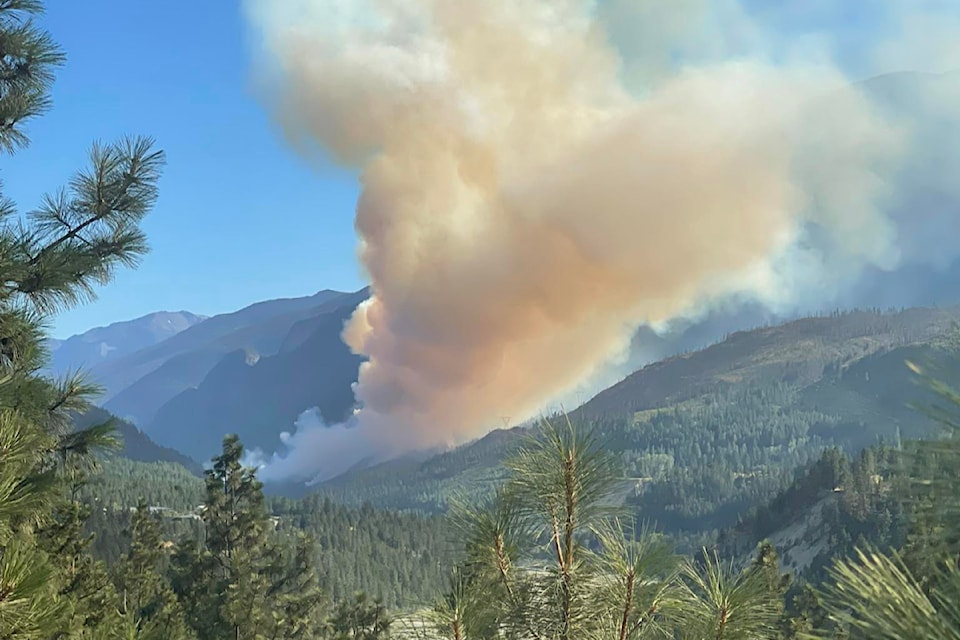As of the afternoon of Tuesday, July 29 the Cantilever Bar wildfire had grown to an estimated 460 hectares, according to the BC Wildfire Service (BCWS).
The fire — on the west side of the Fraser River some 10 kilometres south of Lytton — was discovered in the afternoon of Monday, July 28. The fire is suspected to have been human-caused.
The fire was estimated at 150 hectares on Tuesday morning, but BCWS expected that to increase as smoke cleared during the day and personnel were able to get an updated perimeter track. The fire is largely burning upslope and to the north.
At a media briefing on July 29, Cliff Chapman — BCWS director of operations — noted the challenging nature of the area around Lytton and the propensity for wildfires there.
"That valley usually sets the heat record when we're hot and dry in B.C., and it is at the bottom of a valley that has mountains running up on multiple sides. Fire likes to run up mountains.
"It's a challenging fire for us. The terrain is very steep. Last night when we attempted to send our air tanker fleet we were unable to use them, but we were able to back that up using our helicopter fleet, including our night vision fleet, all through the night last night."
Chapman noted that tactically and operationally, BCWS is concerned about the fire, but added that they are confident they have the right number of resources on the fire.
"We have a great anchor point down by the river to be able to work from, and we are actively suppressing the fire from the outside in to try to knock down any hazard and the potential for spread."
BCWS says that 45 firefighters are on site, along with structure protection personnel, with one crew working on guard construction on the south flank and another working on guard construction on the north flank. Structure protection personnel are assessing and setting up sprinklers.
Three helicopters, including two with night vision capability, are supporting the response with water delivery, gear transport, and reconnaissance.
Late on the evening of July 28 the (TNRD) and put evacuation alerts in place for several properties and reserves on the west side of the Fraser. No known structures were in the immediate path of the fire.
Chapman noted that it is a "very scary" fire for the community, which in 2021 saw 90 per cent of downtown Lytton, as well as homes in TNRD Area "I" and Lytton First Nation, destroyed by the Lytton Creek wildfire. Two people lost their lives in that fire.
"We have staff that also live [in Lytton] that have also faced the challenges of that area and the multiple fires over the last number of years," said Chapman. "Our people are showing up, through the night last night and today, to do everything we can to try to catch that fire at its current size or maybe slightly bigger."
The fire is displaying rank 2 and 3 fire behaviour, meaning a low to moderately vigorous surface fire with a slow to moderate rate of spread, open flame, and occasional candling. Smoke is highly visible throughout the area, including from Highway 1, which remains open.
Chapman noted that the hot temperatures in the region, with Lytton expecting temperatures in the high 30s on Wednesday and Thursday, could challenge fire suppression efforts over the next few days. However, he was confident that BCWS had the resources in position to deal with the situation.
"We have resources across B.C., and we feel confident that anything that starts in the next few days, we have the resources to respond to it. The weather is concerning. Fortunately it's the end of July and not the end of May or the end of June.
"The days are getting shorter, the nights are getting longer. Our relative humidity starts to climb up sooner in the day, our temperatures start to drop, so we have a better chance of success as we get closer to mid-August."



